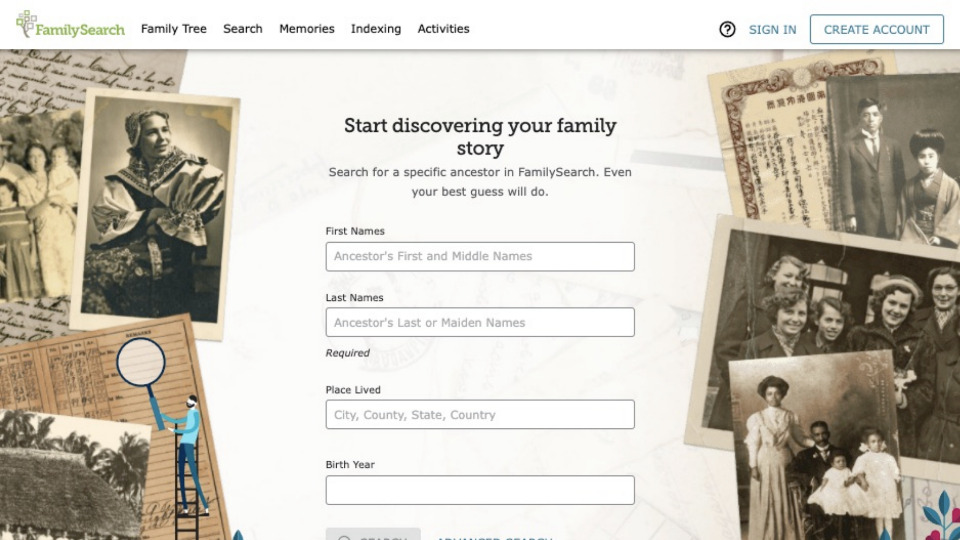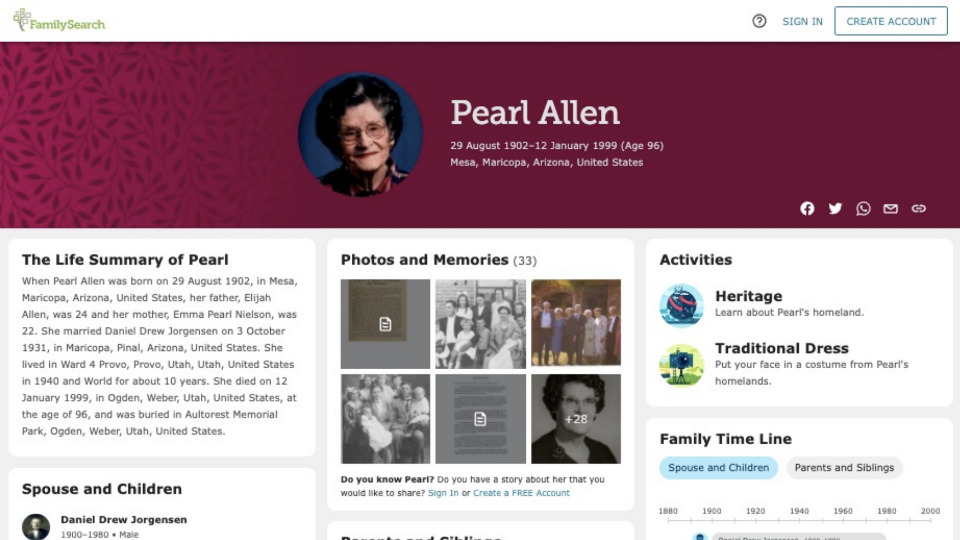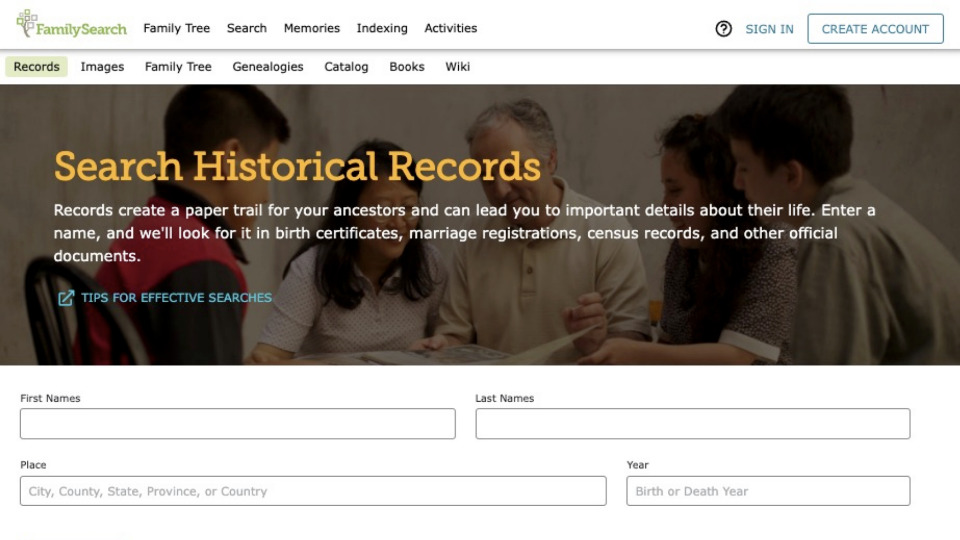
3-FamilySearch-features
A father works on family history on his laptop while his sons look at what he is working on. FamilySearch has recently launched three new or updated features to help new and beginning users. © 2021 by Intellectual Reserve, Inc. All rights reserved.Millions of people worldwide come to FamilySearch.org looking for information about where they came from — many of whom are beginners or first-time visitors.
With more than 8 billion searchable names in its online historical record collections and more than 1.3 billion people in its Family Tree, FamilySearch can be intimidating — and perhaps a bit overwhelming — to use.
To help new and beginner users search and find their ancestors, FamilySearch has recently launched three new or updated features: the new Discovery Search Experience, new ancestor pages and the improved Search Historical Records page.
1. Discovery Search Experience
It used to be that first-time visitors to FamilySearch couldn’t get very far without being prompted to create an account. Now, users can get a sampling of results from the FamilySearch homepage without having to sign in.
The new Discovery Search Experience provides a way to quickly search select databases on FamilySearch — the tree, records, memories and last-name information — all at the same time. It’s the first time FamilySearch has brought multiple search experiences together in one.

3-FamilySearch-features
FamilySearch visitors can now find results from the tree, records, memories and last-name information without having to sign in. Photo is a screenshot from FamilySearch.com. © 2021 by Intellectual Reserve, Inc. All rights reserved.“We want you to see what we have — and maybe even find your information about your ancestors — without logging in so you can understand what FamilySearch offers,” said Ryan Parker, product manager for the Discovery Search Experience.
The search page prompts a user to search for a specific ancestor by filling in first name, last name, place lived and/or birth year. The results pull up a handful of Family Tree profiles, historical records, memories and last-name information.
“We just give you a taste of each so that you can understand what it is and want to learn more,” Parker said.
2. Ancestor Pages
Selecting one of the Family Tree profiles using the new search experience, users may notice a new page for the individual they click on.
The page provides an engaging “snapshot” of the person’s life with a variety of information, including photos, memories, sources, a family timeline, world events, parents and siblings, the meaning of their name, and activities to learn about their homeland.
“We created this experience to allow our patrons to have a way to quickly, easily get to know their ancestor with all the key things they need to know about them,” said Courtney Connolly, product manager of the FamilySearch Family Tree.
One of the goals of the new ancestor page, she said, is to make it more shareable. Buttons in the top section allow users to share the page via Facebook, Twitter, WhatsApp and email — and they don’t need a FamilySearch account to do it.

3-FamilySearch-features
The new ancestor page includes a life summary, photos, memories, family time line, world events and more — all in one place. Image is a screenshot of Pearl Allen’s ancestor page in the FamilySearch Family Tree.© 2021 by Intellectual Reserve, Inc. All rights reserved.The ancestor page also includes a life summary — an automated feature never used before in a search experience. “We auto-populate this story about this person based on the data in the Family Tree,” Connolly said.
Connolly said she hopes the ancestor pages pique curiosity for people to come back and learn more.
“We hope to reach new people that we haven’t reached before. We want to help more people have the benefits and blessings of learning more about their family and where they came from,” she said.
3. Search Historical Records
Historical records such as census records, birth certificates, marriage licenses and draft cards can often reveal important details about someone’s family.
FamilySearch has updated its Search Historical Records page to make searching these records more intuitive and straightforward. Its simple design is more colorful with simplified boxes and filters for easier navigation.
“What we found is that new users were a little intimidated by all those boxes and all those options, and they weren’t sure how to start,” said Jeff Hawkins, product manager for Search Historical Records. “So we’ve created a search experience that has a broader appeal, and yet still remains effective for the set of power [or expert] users.”
 DOWNLOAD
DOWNLOADThe primary objective, as simple as it may be, is to help the user find what they are looking for.
Users can begin with a search by name and filter results by collection, sex, race, birth, marriage, death, residence and other. More than one filter can be applied at a time. For experienced researchers, a “more options” button allows for more concrete information about life events, spouses, parents or alternate names.
Another way to limit search results is by using the “show exact search” function. An exact search option for each individual item is given, which allows a user to be precise and flexible in their search.
Users can also customize how much data is shown, and the way it is displayed, using the preference tab, located near the top of the screen on the results page. There are also options to see translated data or original data and export results into a spreadsheet.
“We hope our users will latch on to it, take a little time, a little patience and discover all of the capabilities,” Hawkins said of the search page, noting his team has already seen an increase in the number of users engaging with it.
For a step-by-step guide to the Search Historical Records page, see https://www.familysearch.org/en/blog/search-historical-records-update/.